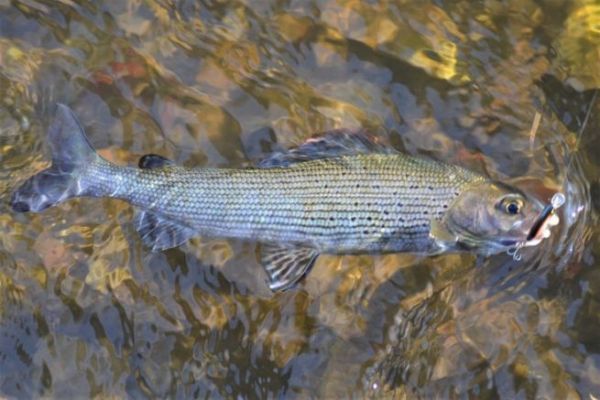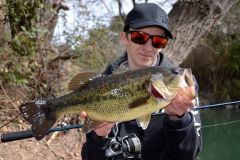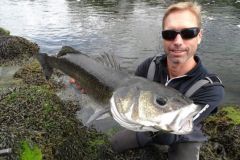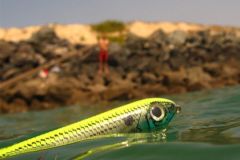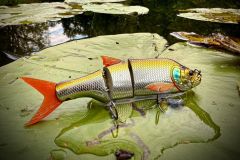The grayling is known to be difficult to catch and requires a fine approach. It feeds on small prey and fly fishing lends itself well to the presentation of tiny imitations. However, it is possible to catch grayling on a lure if you follow these few rules!
Targeting shadows specifically
Often present in the area that bears its name, between the trout area and the barbel area, the grayling often cohabits with one or the other, or even with both species.
To target them with a lure, the best way is to fish by sight, as many fly fishermen do. To do this, fish in late spring or early summer when the water is lower and clearer and the fish are easy to spot.
A good pair of polarized glasses is almost indispensable.
The shadow is relatively easy to distinguish thanks to its beautiful dorsal veiled with blue reflections.
Moreover, you should know that grayling is subject to a specific closing period that extends from January 1 to May 15 in the second category and in the closing period for trout until May 15 of the following year in the first category.
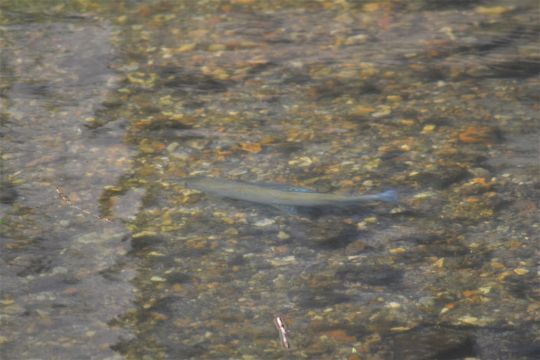
The art of presenting your lure well
Again, the parallel with fly fishing is notable. For the grayling, it usually happens in the presentation. You can make several dozen drifts without the shadow spotting to raise an eyebrow and on a perfect passage, the shadow decides to fully seize your imitation. For that, it is necessary to carry out precise drifts in front of you with a lure which "passes" perfectly in front of the shade.
Your lure should be small. The grayling only feeds on small prey, invertebrates or aquatic larvae. If it happens to be opportunistic and to hunt fry, it remains extremely rare and punctual.

Your small lure will have to be perfectly weighted, so that the drifting is done without dragging or forcing in the line.
Imitations of moths or larvae, mounted on a micro lead head with a tungsten or brass ball are perfect. You have to be rigorous in the size of the tungsten ball. Too heavy and your lure will hit the bottom or not have a natural drift. Too light and you won't be directional enough and the imitation will fly over the shadow that will certainly not go up to get it.
I have also caught some with the micro swimmer fish and more precisely with the tiny fry 38 of Illex, which remains one of the smallest swimmer fish on the market.
I would fish downstream, very slowly upstream in little water, and the graylings would slowly come and grab them.
The right combo
To make precise drifts, I use a 2m20 long rod. I use braid on my reel which is only intended, because of its greater fineness with equal resistance with a monofilament, to throw accurately and easily lures of less than a gram sometimes.
I use a full tip for optimal hooking and to limit breakage or stalling on jumps and head shots that large common graylings can make.
The reel is only used as a line reserve and nothing justifies the use of one ratio more than another. It should be of size 1000 to 2000 to contain perfectly and flush with the spool a very fine braid in PE 0.2 to PE 0.4.
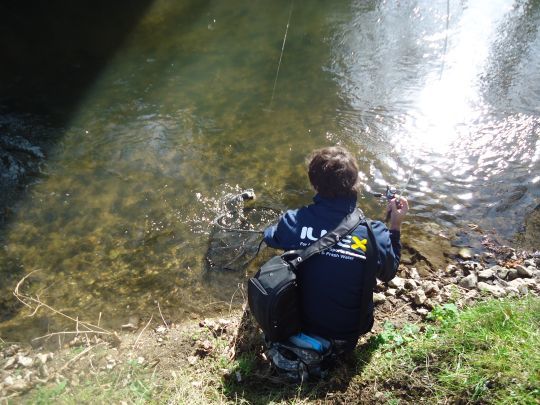

 /
/ 